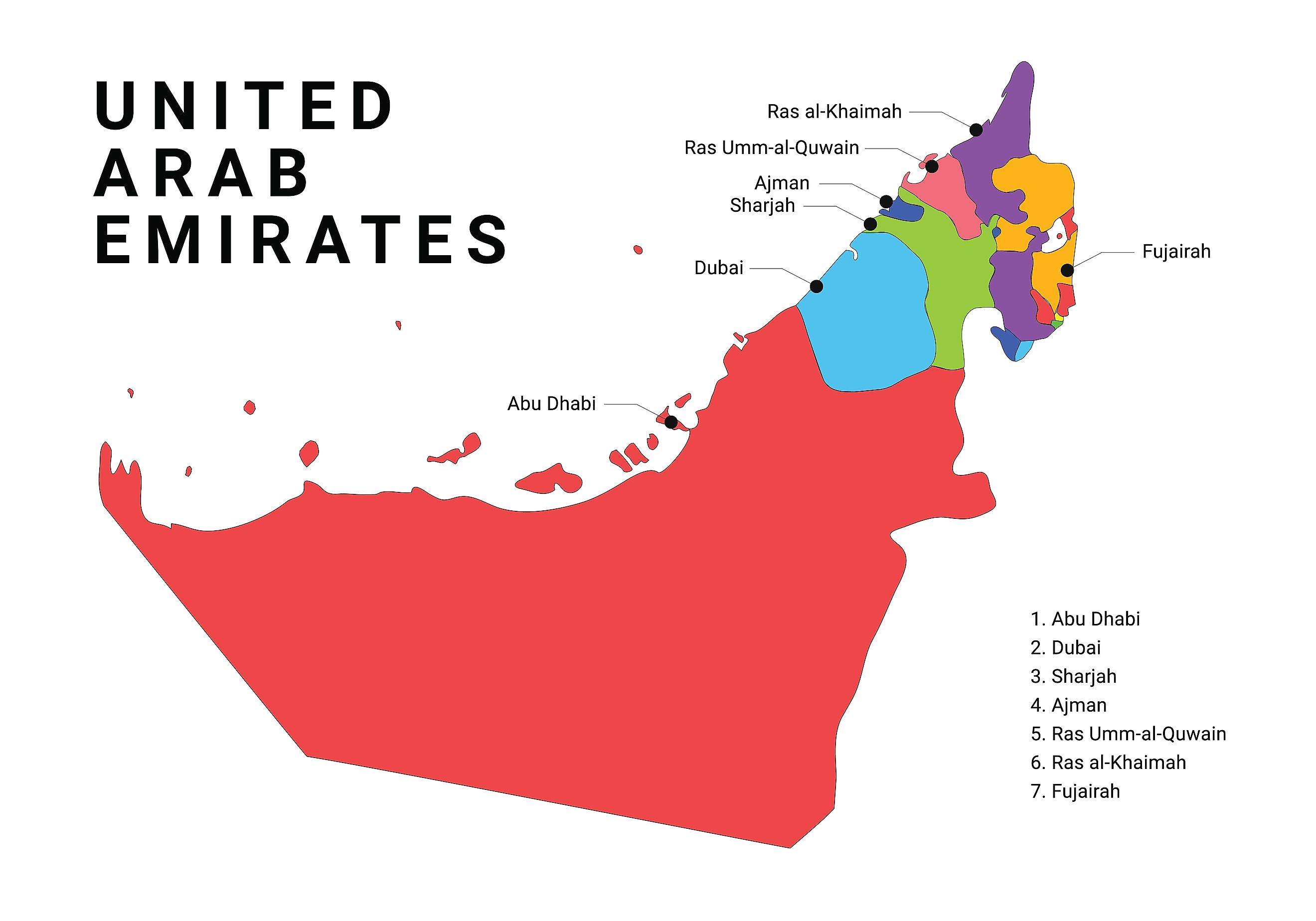
The Seven Emirates Of The UAE
Sprawled across the eastern end of the Arabian Peninsula lies a unique federation of seven city-states collectively known as the United Arab Emirates (UAE). Formed in 1971, the UAE is now an economic powerhouse and a major player on the world stage, connecting East with West; its seven emirates are: Abu Dhabi, Dubai, Sharjah, Ajman, Umm Al Quwain, Ras Al Khaimah and Fujairah.
When it was first formed over four decades ago, the UAE was initially known as the Trucial States and consisted of Dubai, Sharjah, Al Fujayrah, Umm Al Quwain, Abu Dhabi, and Ajman. Newly independent from Britain, these states sought an alliance, coming together to maximize their influence and grow their economies. After gaining their independence from the British in 1971, they created a federation known as the United Arab Emirates. The seventh Emirate, Ra’s al-Khaimah, initially refused the treaty but joined in 1972.
The UAE is governed by a Federal Supreme Council composed of representatives from the seven Emirates. Each year, the Emirates set aside a percentage of their revenue for the UAE budget, allowing it to invest at the federal level. Although a unified political and economic force, the Emirates have also retained their distinct national identities, each growing and developing at different rates since the UAE began.
Dubai
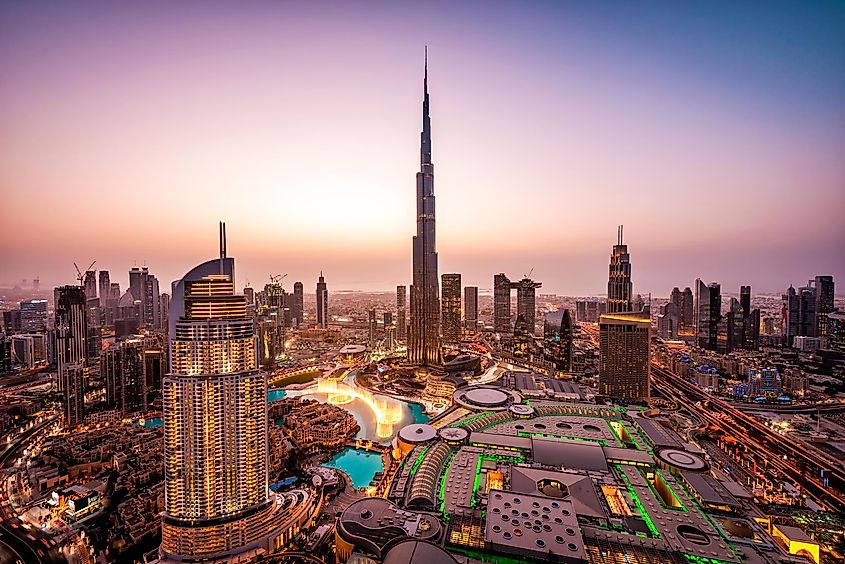
Dubai is the second largest emirate in the UAE and has a population of 3,848,812, according to current estimates. Dubai’s flourishing economy, which grew to AED 115 billion (or around $31 billion) in the first quarter of 2024, is mainly dependent on trade and tourism. First established in 1833, Dubai has continually been ruled by the Al Maktoum family. Much of the state is desert with most business and tourism centering on the capital, Dubai City.
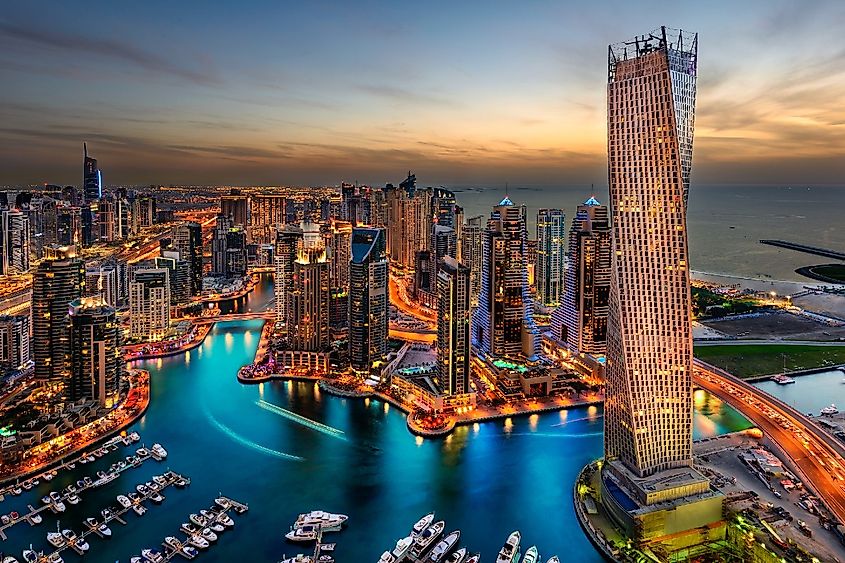
Unlike its neighboring emirates such as Abu Dhabi, Dubai's oil reserves have been largely exhausted; oil contributes less than 1% to Dubai’s total GDP. Instead, the emirate has diversified its economy, pivoting into areas such as tourism. The state is now home to some of the UAE’s biggest tourist attractions, including the world's tallest building, the 2,717 ft tall Burj Khalifa.
Abu Dhabi
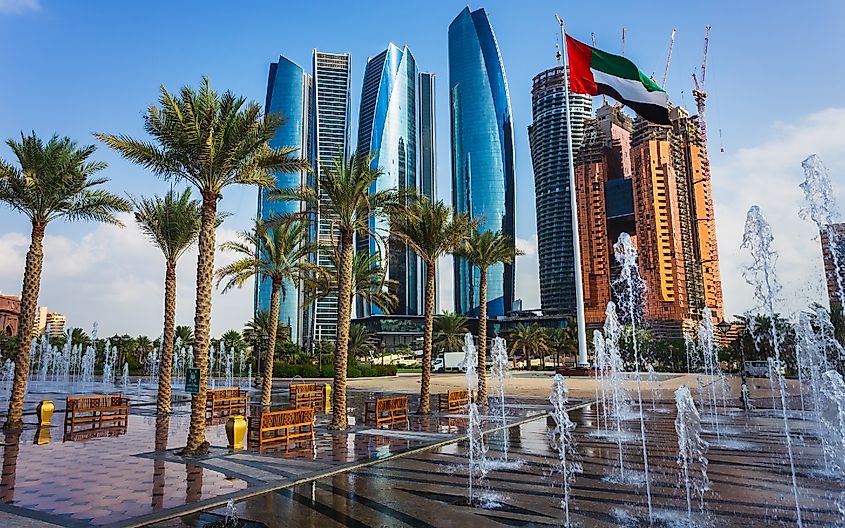
The UAE’s capital, Abu Dhabi is the largest emirate in the UAE, occupying 84% of its total territory and contributing the largest share of the UAE economy, with oil and finance being key sectors. Abu Dhabi’s population was 3.8 million in 2023 and its GDP was $310 billion.
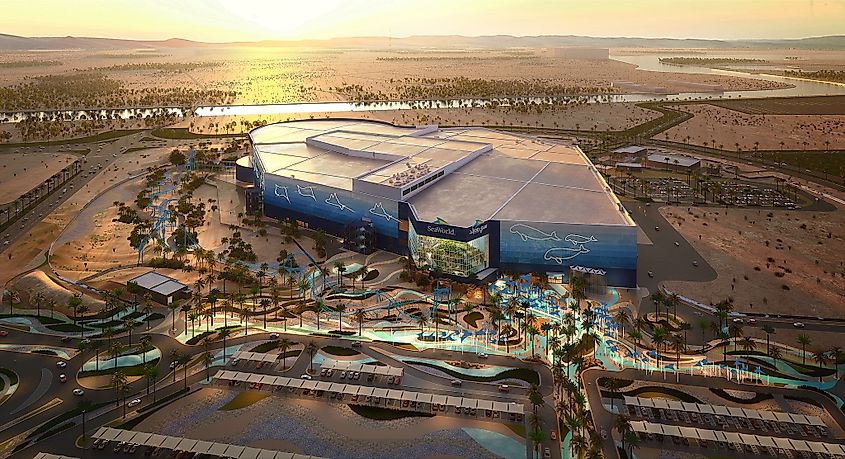
Abu Dhabi is one of the wealthiest cities in the world, with most of its revenue originating from oil, renewable energies, and financial services. It has also cultivated a strong tourism industry, hosting events such as the Abu Dhabi Golf Championship, the prestigious Abu Dhabi Desert Challenge cross-country rally, and the Formula One Abu Dhabi Grand Prix. The state has also placed a strong emphasis on its cultural institutions and traditions with attractions including the Sheikh Zayed National Museum, the Guggenheim Abu Dhabi, and the Louvre Abu Dhabi.
Sharjah
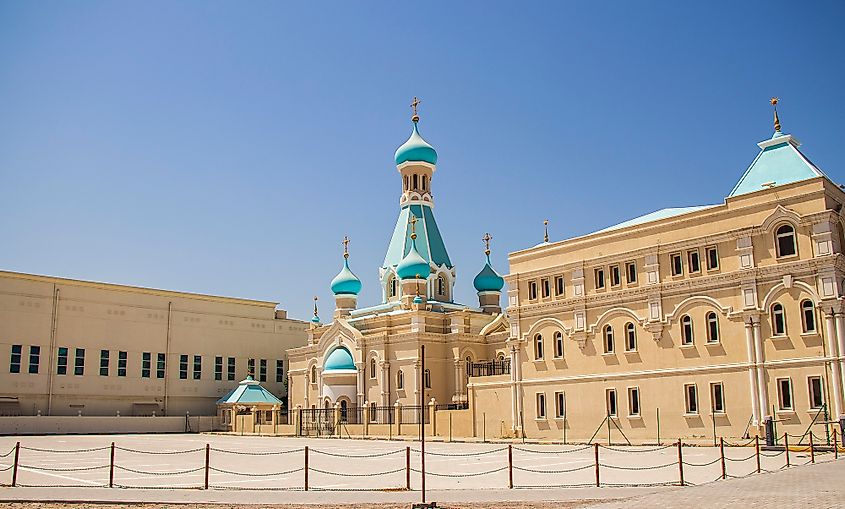
Sharjah is the third most populous city in the UAE with a population of 1.8 million in 2022. It’s the only emirate that has two coastlines with the Arabian Gulf to the west and the Gulf of Oman in the east. Sharjah is well known for its stunning landscapes and has the largest number of nature reserves in the UAE.
The state is next door to Dubai but is much less expensive, so many of its residents commute across the border. Sharjah has invested heavily in its educational institutions, especially in the engineering and technology sectors, adding to its status as a feeder nation for Dubai’s growing workforce.
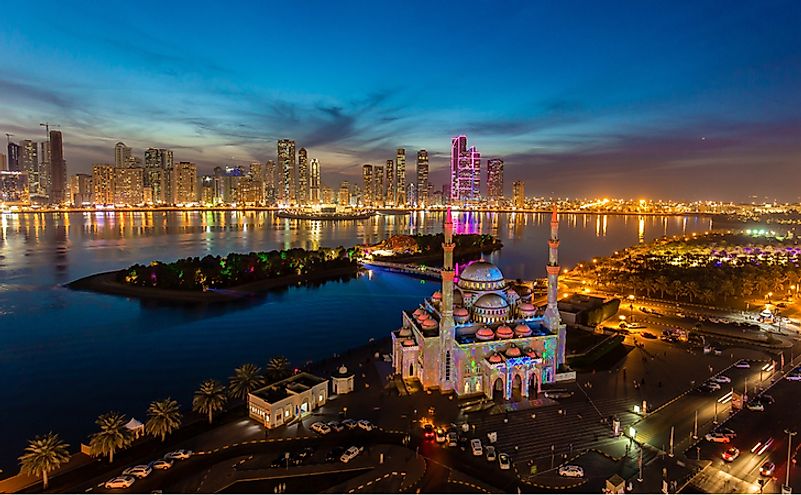
The state is also known as a centre of Middle Eastern culture and, in 2014, was named the 'Capital of Islamic Culture for 2014' by the Organisation of Islamic Countries. Sharjah is a “dry emirate”; which means that drinking or possession of alcohol is forbidden unless you have a personal alcohol license.
Ajman
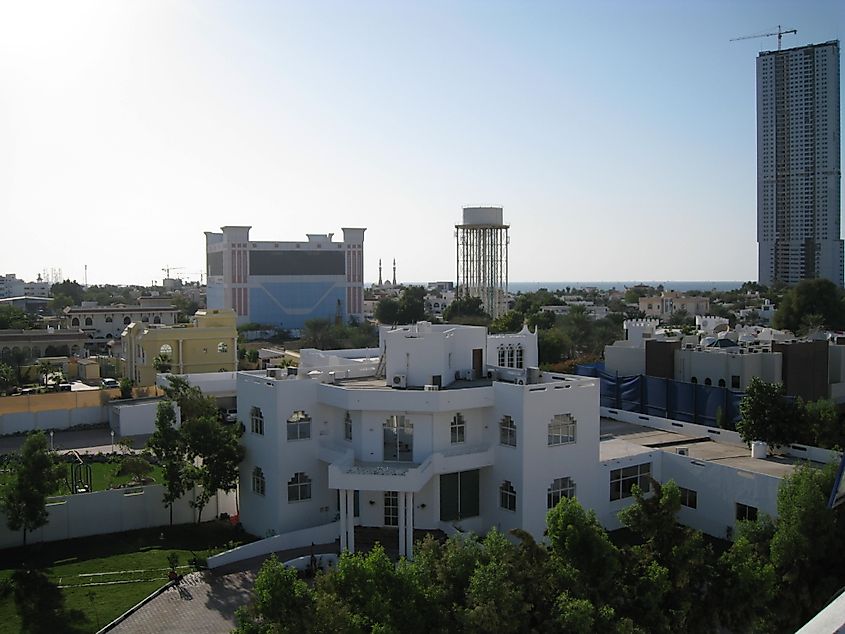
The smallest emirate in the UAE, Ajman, had a population of 226,172 people in 2024. This tiny state in the northern part of the UAE has three major cities within its borders. The largest, Ajman City, contains its banking and business center. Another major driver of the local economy is the Ajman Port and Ajman Free Zone.
The major tourist attractions in this area include Ajman Fort, a restored 18th century fortification that now operates as a museum. Other landmarks include the Ajman Museum, Masfout Castle, and Masfout Gate. Ajman’s history stretches back to 1803 when the state was founded by Sheik Rashid bin Humaid Al Nuami.
Ras Al Khaimah
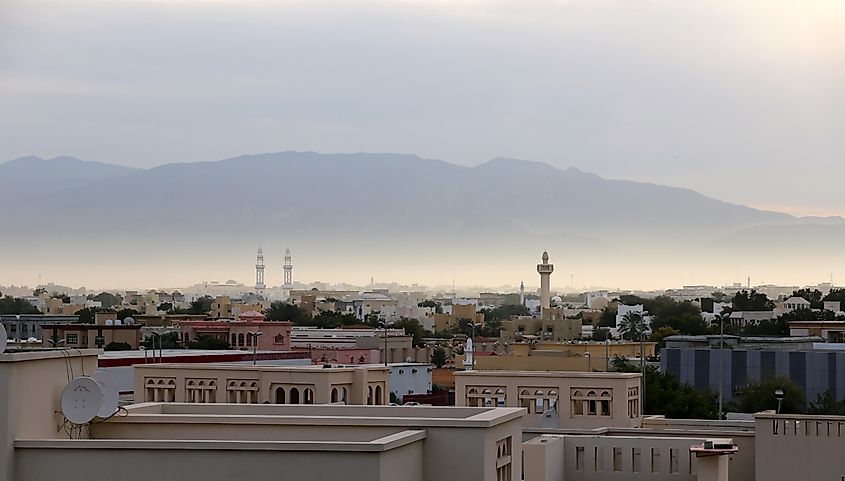
Home to around 400,000 people in 2023, Ras al-Khaimah is the fourth-largest emirate and is known for its rich history. There are around 1,000 archaeological sites in Ras al-Khaimah which was one of the busiest trading posts in the Arabian Gulf during the 13th and 14th centuries. Ras al-Khaimah is in the northern part of the UAE, bordering part of Oman’s territory, the Musandam.
The emirate does not have any oil so it has focused on diversifying its economy into real estate, tourism, building materials, service sector, and agriculture. In recent years, its manufacturing sector has expanded and it’s now the headquarters of one of the largest ceramics manufacturers in the world, RAK Ceramics. Ras al-Khaimah has also seen success in attracting tourism, promoting scenic sites such as Jebel Jais, the highest peak in the UAE and home of the world’s longest zipline.
Fujairah
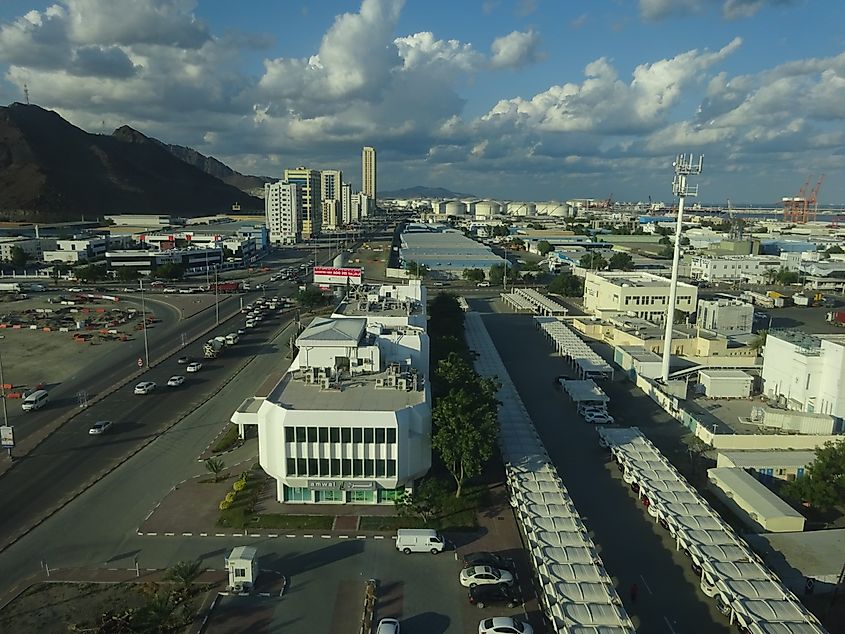
On the eastern coast of UAE, Fujairah’s economy relies on fishing and agriculture. The state’s population was around 317,000 in 2022. Fujairah enjoys a strategically important position as the UAE’s only access to the Indian Ocean and operates a multipurpose port that is home to several prominent livestock shipping companies. The free zone surrounding the port is a center of foreign investment, and in 2015, Fujairah committed to the Fujairah Plan 2024 for further development of the port area, which involves constructing new terminals for oil, marine services, dry bulk, and more.
Umm Al-Quwain
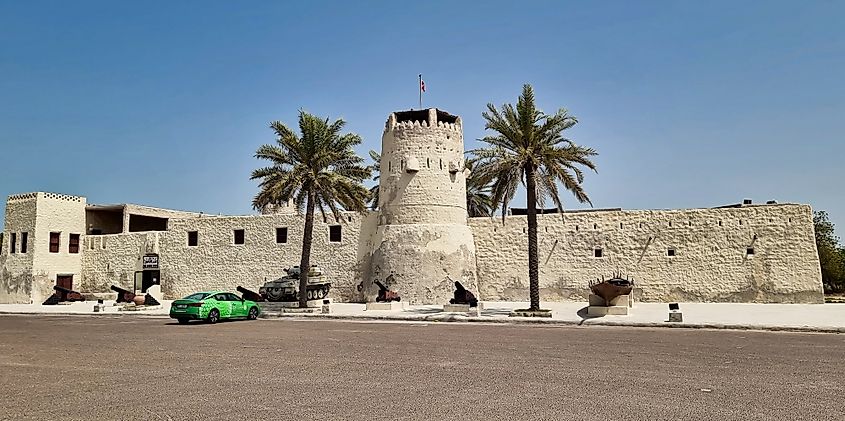
Umm Al-Quwain is the smallest and least populated emirate, with just under 60,000 residents in 2022. Unlike the other emirates, Quwain has not made any findings of oil products or gas. Its main industry is fishing, and it exports seafood throughout Europe and the Middle East. The state is laying the foundation for further growth with the establishment of the Ahmed Bin Rashid Port and free trade zone. It also hopes to tap into the so-called ‘blue economy’ with a strategy to sustainably expand its environmental resources, in particular the unique coastal mangrove ecosystem on its coastline.
Future Of The United Arab Emirates
The UAE has come a long way since its formation in 1971 and is set to go even further. Propelled by its rich oil reserves, the country’s economy has skyrocketed to become one of the world’s largest. In recent years, the UAE has diversified into agriculture, tourism, technology, manufacturing, and alternative energies to maintain momentum and plan for the future.
The country has set ambitious targets in almost every area, aiming to be carbon neutral by 2050, launch its own interplanetary mission in 2028, build the largest solar park in the world by 2030, and be a leader in global food security by 2051. A comprehensive roadmap for growth, stable governance, and progressive goals make the UAE a rising global superpower.











